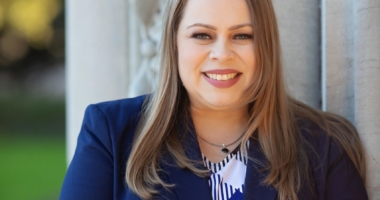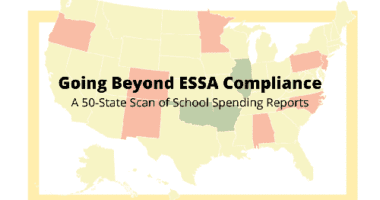Trends in State ESSA Plans: The Problem With Supergroups
Among the most important questions to ask to understand whether a state accountability system is designed to promote opportunity and achievement for all groups of students are:
- Do all groups of students matter in the ratings given to individual schools?
- How does the state identify schools that need to improve for any individual group of students?
In answering those questions about submitted state ESSA plans, we previously explored how some states are defining away low performance among groups of students rather than honestly acknowledging it.
Another trend among state plans that will undermine attention and action to improve outcomes for individual groups of students is the use of “supergroups.” A supergroup includes students from two or more of the individual groups of students that ESSA requires states to hold schools accountable for: students from major racial/ethnic groups, low-income students, students with disabilities, and English learners.
There are two kinds of supergroups that are dominating state plans so far: 1) “high-need” groups, which lump together students who have been historically underserved, including students of color, low-income students, students with disabilities, and English learners; and 2) “lowest performing” groups, which include students in the bottom 25 percent or 30 percent of achievement within their school, regardless of demographics, English language proficiency, or disability status.
These supergroups are being used in place of individual groups of students for the purposes of rating schools and identifying schools that need to improve. There are serious problems with both.
A high-need supergroup counts different groups of students together, while ignoring meaningful distinctions between the needs of (and civil rights protections afforded to) each group. A high-need supergroup also allows one group’s performance to mask the performance of another. For example, if Latino students and low-income students within a school are making progress but students with disabilities are not, students with disabilities may not get the attention they need and deserve because their performance is overshadowed by the other groups in the high-need supergroup.
A lowest performing supergroup captures students who are lagging behind their peers, but ignores higher achieving students who are low-income, of color, English learners, or have a disability. As a result, using a lowest performing supergroup may permit schools to overlook some higher performing students, even though the evidence is clear that high-achieving students of color and low-income students are less likely than high-achieving white and affluent students to have access to rigorous courses, take the SAT/ACT, or be exposed to other opportunities that are critical to college and career readiness.
To be fair, some state leaders may have a well-intended, but misguided, objective for using a supergroup: They are concerned that some schools will have so few students in an individual student group that it won’t meet the state’s established “n-size” (the minimum number of students that has to be in a group before that group is counted for accountability) and, therefore, the school won’t be held accountable for that group’s performance. But the solution here isn’t to start lumping different groups together; it’s to set the lowest possible n-size.
Overall, using supergroups takes attention away from individual groups of students, and with it, action on behalf of groups that need it.
Consider a high school identified as consistently underperforming for a supergroup of African American students, Latino students, English learners, students with disabilities, and low-income students. What kind of information does that give parents about how well that school is serving each different group of students? How does it help educators accurately diagnose the root cause(s) of underperformance and appropriately target resources when, for example, the resources that English learners may need could be very different from what African American students need?
That’s what’s disheartening about supergroups: Beyond masking inequities in learning opportunities and outcomes, they ignore diversity. They ignore the unique histories and cultures that different students bring when they attend schools. By lumping distinct student groups into an “other” group, states are telling schools and districts not to distinguish the histories and educational injustices these students have historically experienced — and to continue the status quo. This not only robs students of needed supports and rich educational opportunities, but it also devalues the unique talents and experiences they bring.










